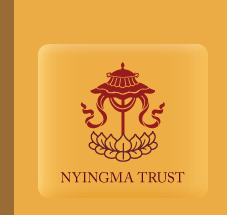












Schools of Buddhism
Just about a hundred years after the Buddha's Parinirvana serious differences arose within the Buddhist Order over the true interpretation of the Buddha's teachings and certain practices followed by some monks. An agreement could not be reached at the second Buddhist council, which had been called to resolve the issue. This resulted in the great schism within the Order and led to the formation of the two divergent schools of thought.
The first school, called the Sthaviravāda literally means "Teaching Of The Elders," established themselves as the orthodox school of Buddhism, firmly adhering to the original teachings of the Buddha. Today it is more widely known by its Pali name, Theravāda.
The second group did not find a problem in having a liberal attitude toward the rules prescribed in the Pitikas and the deviation followed by the certain monks. They became known as the Mahasamghikas, or the "Greater Community". It is generally accepted that what we know today as the Mahayana, which literally means "Greater Vehicle", arose from the Mahasamghikas sect.
Mahayana is a large religious and philosophical structure. It constitutes an inclusive faith characterized by the adoption of new Mahayana sutras in addition to the earlier Agama texts (Pali Canon containing the original teachings of the Buddha). Mahayana sees itself as penetrating further and more profoundly into the Buddha's Dharma.
As Buddhism spread to different parts of the world, new thoughts and improvisations became integrated with the existing cultural beliefs and practices. Today the surviving schools of Buddhism can be roughly grouped as Theravada, Mahayana and Vajrayana.
Vajrayana, which literally means "Diamond Vehicle", is also known as Mantrayana or Tantric Buddhism. Some people consider Vajrayana as a subset of the Mahayana, while others see Vajrayana as an advanced vehicle where the Mahayana is a prelude to the Vajrayana.
Tibetan Buddhism has its roots in the Mahayana and the Vajrayana traditions. There are four different schools of Tibetan Buddhism.
Nyingma-pa, which literally means "School of the Ancients" is the oldest of the four schools and traces its origin to great Indian tantric mystic Padmasambhava who came to Tibet in the 8th century. Along with tantric practices, Nyingma-pa emphasizes revealed teachings attributed to Padmasambhava and the "great completion" or Dzogchen doctrines.
Sakya-pa ("Gray Earth") and Kagyu-pa ("Oral Tranmission School") were established in the 11th century.
Gelug-pa ("School of the Virtuous"), founded in the 14th century is the youngest of the four Tibetan schools. Gelug-pa has held political leadership of Tibet since the Dalai Lamas were made heads of state by the Mongol leader Güüshi Khan in 1642.

2425 Hillside Avenue
Berkeley CA 94704
510-809-1550
Contact Us
Copyright © 2017 Nyingma Trust. All Rights Reserved
Portuguese
English














